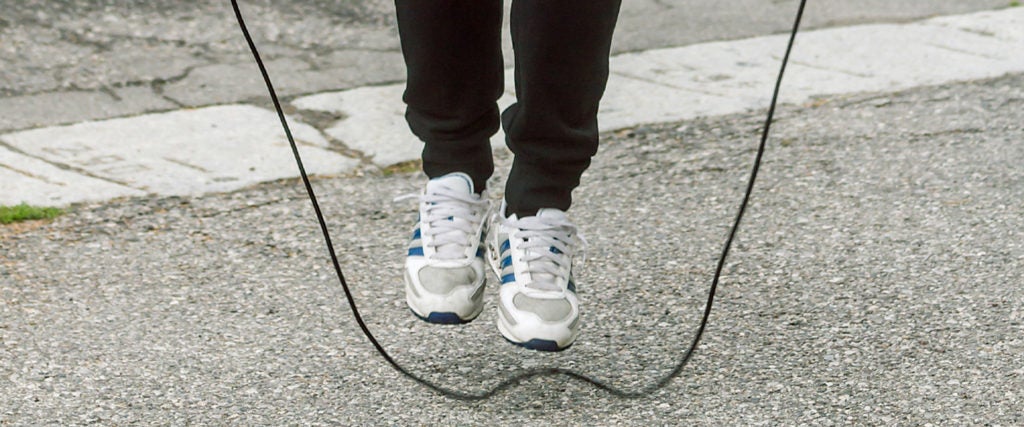I am kind of a sucker for the concept of adding weights to normal activities. Ankle weights for walking? Might as well. Weighted hula hoops? Those are actually way easier than the un-weighted kind. A weighted jump rope? Well, that’s just the next logical progression in my quest to stay fit as I toil through this mortal coil.
The idea behind a weighted jump rope versus an unweighted one is largely just that the weights increase the difficulty. At the same time, the added weight can make the actual practice of jumping rope easier by making you more aware of the movement of the rope and therefore less likely to screw up. Allegedly, anyway.
There’s a huge range in the market for weighted jump ropes. Some even cost more than $100, offering weighted ropes rather than weighted handles. The vast majority of weighted ropes, however, have removable weights in the handles, typically a half-pound each. I purchased one of these at Dick’s Sporting Goods for $20.
I can’t remember the last time I used a jump rope, though I do remember that I wasn’t half-bad at it. In some ways, jumping rope is like riding a bicycle — your body never really forgets how to do it. That said, your body knowing how to do something isn’t the same as it having the will. As I’ve now learned, however many years it’s been since I used a jump rope has surely been an adequate amount of time for my body to lose that will entirely.
Still, I found that I picked up the whole act of jumping rope again quickly, even with the weights in the handle. In fact, I barely thought about the added weight at all. For comparison, I gave it a few tries with the weights removed and it felt about the same, except it was a bit harder to get the right rhythm going. With the weights, I could get into the flow of jumping more quickly and found myself getting caught in the rope less.
Regardless of whether jumping was harder with the weights, jumping rope was still definitely hard. I spent my workday picking up the rope whenever I had a moment, counting to 60 each time. I did probably seven rounds of this throughout the day, and to my surprise, I woke up the next morning sore in most of my body, but especially my calves.
This morning, I tried the rope again in a bit more of a regimented way. I told myself I would do 10 rounds of 60 jumps. Because the rope was slightly too large for me, I was double-jumping each time — one big jump when the rope met the ground, and one little jump in between. While I eventually did hit 600 reps, it wasn’t nearly as organized as I’d intended — on no occasion could I do 60 full jumps in a row, only because I somehow managed to trip on the rope before I’d hit that number. Sometimes I’d make it to 47 jumps before tangling, sometimes I’d only make it to five. Throughout every few dozen jumps, I had to take a break. Still, I was extremely sweaty in the end.
Maybe I didn’t remember this as a kid, but jumping rope is fucking exhausting. How the hell do children sing songs and dance around while they do it? If I did so much as even think about tightening my core, I’d screw up. I could only think about jumping, and honestly, it was boring.
Nevertheless, it does seem to be a quick and effective workout. According to Harvard Health, someone my size burns around 100 calories or more in 10 minutes of using a regular jump rope. For comparison, I’d also burn 100 calories running a 10-minute mile, something I cannot do. There isn’t yet a ton of data on how many calories someone burns using a weighted jump rope, but assuming that it’s harder, it probably does indeed burn more calories.
I definitely won’t be tossing my weighted jump rope in the trash after this. Considering how sweaty and sore I got in a short amount of time, I know it was definitely giving me a good workout. It wasn’t super exciting, but most traditional cardio isn’t, anyway. Jumping rope is a fast, cheap way to get your heart rate up if you hate running, so it’s solid in my book. I don’t know if the weights did a ton for me, but at very least, I can use it as a weapon in the future.

